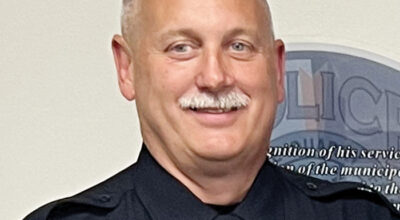Keep it simple: Livingstone education dean gets Finnish child development crash course
Published 12:05 am Sunday, June 25, 2023
SALISBURY — Finland’s early childhood development model is regarded as one of the world’s best, so to determine what makes it successful, a Livingstone professor visited for 10 days.
What she found was actually quite simple.
Dr. Tarsha Reid is dean of education, psychology and social work. Last month, she traveled to Finland with 10 representatives from other historically black colleges and universities.
“We were there to observe their early childhood development program,” Reid said. “In Finland, they have (one of the) best (early childhood development programs) in the world, and we went to observe why that is.”
As an instructor of future academic leaders, Reid was there on a mission.
“I wanted to see what I could bring back to teach my educators,” Reid said. “What is it that they are doing that is allowing their students to excel.”
Reid pointed out several discernible differences between the U.S. and Finnish models.
“They are doing what we used to do in the ’80s — simplicity,” Reid said.
Reid indicated that Finnish parents could choose from multiple early childhood education outlets for their one-year-old children after parental leave expires. Thanks to government subsidies, no one is denied a spot in a daycare facility, either.
The structure of their classroom is also different. Reid explained that daycare facilities are mainly held outdoors.
“There is a Finnish saying that there is no such thing as bad weather, only bad clothing,” Reid said.
Finnish students also start traditional schooling later, starting pre-kindergarten or “pre-K” around six years old.
“By children going to school later, you don’t have attachment issues that you have when students go to school at a younger age,” Reid said. “In pre-K, they are teaching regular skills for social and emotional learning … lets be friends. Let’s learn how to share. Elaborate your feelings. They are not concentrating heavily on the alphabet or learning numbers. It is more about getting along and understanding each other while learning to be in the same space.”
Reid explained that this directly contrasts with the U.S. model, where by pre-K, there is already a heavy emphasis on numbers and reading.
“If you don’t know your numbers, you’re going to be behind,” Reid said. “(Finland doesn’t) push that.”
The model she saw in Finland reinforced the value of experience.
“Children are learning through play,” Reid said. “They are learning in their environment. They go outside. They may count the trees. That is learning numbers, but you are not sitting there, saying, ‘I need you to write number 1’ or to recite the alphabet.”
Another big difference that Reid observed was an absence of standardized testing until high school.
“In elementary, you are learning without fear of competition, the fear of being grouped and the fear of if I don’t make this score, I will be left behind,” Reid said.
One of the things that Reid found ironic was how much of the Finnish model was based on U.S. research.
“They are looking at the research we have done that we have just not implemented,” Reid said.
As she explored the outdoor facilities, Reid observed children capable of starting fires to make their lunches. In the elementary schools, Reid saw children already being taught vocational skills.
“Young students were using a hand saw and drill press,” Reid said. “They are also taught cooking. We saw a classroom that had kitchen appliances and a washer and dryer. Students are taught how to crochet and sew and make birdhouses.”
Reid and the other participants stayed in a small lodging, not unlike a cabin, for their stay. They chopped wood and made their meals. Reid acknowledged that she was unsuccessful at starting a fire, even after two hours, indicating she wished she had learned how to do it at a young age.
Fully equipped with a new perspective, Reid returned to the U.S. and plans to share it with her students in the coming school year.






